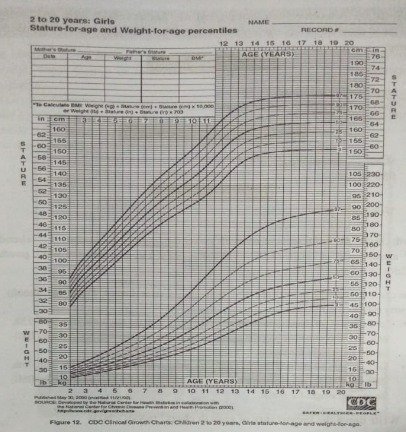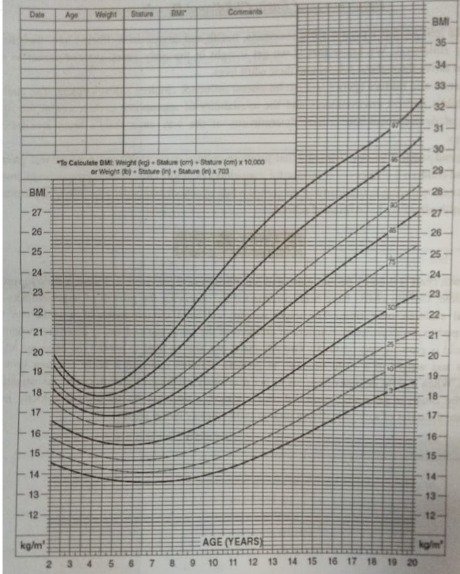Children Growth chart – Health of the children has been considered as the vital importance to all societies because children are the basic resource for the future of humankind. Nursing care of children is concerned for both the health of the children and for the illnesses that affect their growth and development. The increasing complexity of medical and nursing science has created a need for special area of child care, i.e. pediatric nursing.
Pediatric nursing is the specialized area of nursing practice concerning the care of children during wellness and illness. It includes preventive, promotive, curative and rehabilitative care of children. It emphasizes on all round development of body, mind and spirit of the growing individual. Thus, pediatric nursing involves in giving assistance, care and support to the growing and developing children to achieve their individual potential for functioning with fullest capacity.
Children Growth chart

A growth chart is used by pediatricians and other health care providers to follow a child’s growth over time. Growth charts have been constructed by observing the growth of large numbers of normal children over time. The height, weight, and head circumference of a child can be compared to the expected parameters of children of the same age and sex to determine whether the child is growing appropriately.
Growth charts can also be used to predict the expected adult height and weight of a child because, in general, children maintain a fairly constant growth curve. When a child deviates from his or her previously established growth curve, investigation into the cause is generally warranted. For instance, a decrease in the growth velocity may indicate the onset of a chronic illness such as inflammatory bowel disease.


Definition of Growth Chart:
Growth charts consist of a series of percentile curves that illustrate the distribution of selected body measurements in children. Pediatric growth charts have been used by pediatricians, nurses, and parents to track the growth of infants, children, and adolescents.
Components of Clinical Growth Chart
The clinical growth charts reflect modifications in the format of the individual charts, whereby two individual charts appear on a single page, and data entry tables have been added. The clinical charts have the grids scaled to metric units (kg, cm), with English units (lb, in) as the secondary scale. Clinical charts are available for boys and for girls. The available clinical charts include the following:
Infants-birth to 36 months:
- Length-for-age and Weight-for-age
- Head circumference-for-age and Weight-for-length
Children and adolescents- 2 to 20 years
- Stature-for-age and Weight-for-age
- BMI-for-age
Preschoolers-2 to 5 years
- Weight-for-stature
Growth charts consist of a series of percentile curves that illustrate the distribution of selected body measurements in children. CDC recommends health care providers use WHO growth standards for infants and children up to 2 years of age.
These charts are available in black and white (English) and color (English, French and Spanish) and were published in two sets.
- Set 1 contains 10 charts (5 for boys and 5 for girls), with the 5th, 10th, 25th, 50th, 75th, 90th, and 95th smoothed percentile lines for all charts, and the 85th percentile for BMI- for-age and weight-for-stature.
- Set 2 contains 10 charts (5 for boys and 5 for girls), with the 3rd, 10th, 25th, 50th, 75th, 90th, and 97th smoothed percentile lines for all charts, and the 85th percentile for BMI- for-age and weight-for-stature.

Importance of Growth Chart:
- Helps in growth monitoring of a child.
- Diagnostic tool: Helps in identifying high risk children.
- Planning & policy making in relation to child health care at the local & central level.
- Can be used as an educational tool for mother in participating actively in growth monitoring of her child.
- Tool for action: It makes referral easier.
- Evaluation: It evaluates the effectiveness of corrective measures of improving child growth.
- Tool for teaching: It can be used for teaching for example, the importance of adequate feeding, and the deleterious effect of diarrhea.
Read more:
